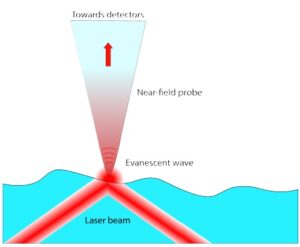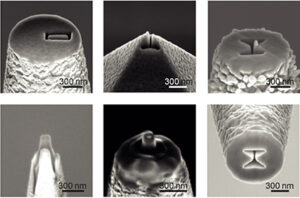List of members |
Facilities |
Internships and jobs |
PhD |
Publications |
News |
We have several fluorescence microscopes coupled to CW/pulse lasers, avalanche photodiodes and spectrometers. They enable us to study the emission of single photons from fluorescent nano-emitters, and to produce spectra at the scale of individual emitters. They can also perform polarimetric studies of emission and excitation, record radiation patterns for individual emitters, and produce dispersion curves for the nanostructures studied.
One of these devices can be operated with a helium cryostat.
Another enables optical lithography of nanostructures.
Contacts
- Laurent Coolen (Cryostat and fluorescence): laurent.coolen(at) insp.upmc.fr
The Nanostructures and Optics team has recently installed a near-field optical microscope. The near field optical microscopy is based on the concept of local probe. Like the STM (Scanning Tunneling Microscope), some optical information exists and can only be detected in the near field. Through the use of local probes (e.g. fiber tips), near-field optical microscopy makes it possible to collect and study the behavior of light at very sub-wavelength scales. In particular, our team has acquired a know-how on the use of nanostructured tips allowing the exaltation of phenomena at these nanometric scales. This technical improvement allows us to place optical nanostructures in a deterministic way close to quantum emitters and thus to study in a perfect way the coupling between these two elements. To do this, the optical near-field microscope is coupled to a battery of detectors such as APDs (avalanche photo diode), a spectrometer and an ultra-sensitive camera.

Figure 1: Operating principle of NSOM microscopy. A near-field tip is placed very close (less than 15 nm) to a sample in order to detect and/or collect the evanescent waves existing only on its surface, thus allowing to obtain sub-wavelength light information from the latter.

Figure 2: Examples of nanostructured tip allowing to enhance the optical near-field signal due to their particular electromagnetic properties resulting from their geometries, dimensions and materials.
Contact
- Mathieu Mivelle : mathieu.mivelle(at)insp.upmc.fr

